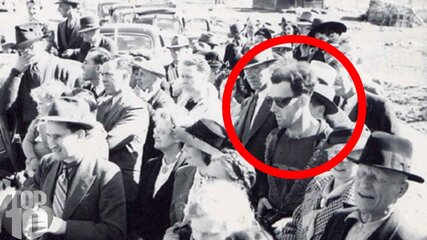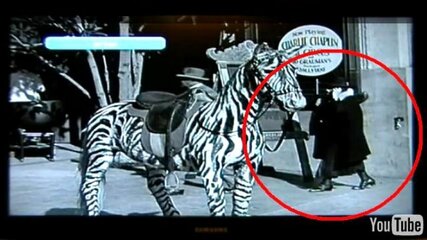PERSPECTIVES: MUCH ADO ABOUT NOTHING
============================================================================
The Bridge from Nowhere
How is it possible to get something from n0thing?
============================================================================
"The question of being is the darkest in all philosophy.” So concluded William James in thinking about that most basic of riddles: how did something come from nothing? The question infuriates, James realized, because it demands an explanation while denying the very possibility of explanation. “From nothing to being there is no logical bridge,” he wrote.
In science, explanations are built of cause and effect. But if nothing is truly nothing, it lacks the power to cause. It’s not simply that we can’t find the right explanation—it’s that explanation itself fails in the face of nothing.
This failure hits us where it hurts. We are a narrative species. Our most basic understanding comes through stories, and how something came from nothing is the ultimate story, the primordial narrative, more fundamental than the hero’s journey or boy meets girl. Yet it is a story that undermines the notion of story. It is a narrative woven of self-destruction and paradox.
How could it not be? It stars Nothing—a word that is a paradox by its mere existence as a word. It’s a noun, a thing, and yet it is no thing. The minute we imagine it or speak its name, we spoil its emptiness with the stain of meaning. One has to wonder, then, is the problem with nothingness or is the problem with us? Is it cosmic or linguistic? Existential or psychological? Is this a paradox of physics or a paradox of thought?
Either way, here’s the thing to remember: The solution to a paradox lies in the question, never in the answer. Somewhere there must be a glitch, a flawed assumption, a mistaken identity. In so succinct a question as “how did something come from nothing?” there aren’t many places to hide. Perhaps that is why we return again and again to the same old ideas in new and improved guises, playing the trajectory of science like a fugue, or variations on a theme. With each pass, we try to lay another stepping stone in James’s elusive bridge.
The oldest stone is this: If you can’t get something from nothing, try making nothing less like nothing. The ancient Greeks suggested that empty space is filled with substance—a plenum, an ether. Aristotle conceived of the ether as an unchanging fifth element, more perfect and heavenly in its invariance than earth, air, fire, or water. True nothingness was at odds with Aristotle’s physics, which said that bodies rise up or fall down as dictated by their rightful place in the natural order of things. Nothingness, however, would be perfectly symmetric—it would look the same from every angle—rendering absolute spatial directions like “up” and “down” utterly meaningless. An ether, Aristotle figured, could serve as a kind of cosmic compass, an ultimate reference frame against which all motion could be measured. For those who abhorred a vacuum, the ether banished every last trace of it.
The ancient ether stuck around for millennia until it was re-imagined in the late 19th century by physicists like James Clerk Maxwell, who discovered that light behaves as a wave that always travels at a particular speed. What was waving, and speed relative to what? The ether was a handy answer, providing both a medium for light waves to travel through, and, as Aristotle originally imagined, a reference frame against which all change in the universe would unfold. But when Albert Michelson and Edward Morley set out to measure the motion of the Earth through the “ether wind” in 1887, they couldn’t find it. With his special theory of relativity, Einstein put the final nail in the coffin of the ether soon after.
Heisenberg’s Uncertainty Principle is a natural source of quantum maggots.
For decades, we have looked at the ether as a historical oddity, a throwback. But it is harder to kill than we imagined. Today, it can be glimpsed in a new form: the Higgs field, which permeates the vacuum of empty space and whose excitation is the now-famous Higgs boson. The Higgs is what’s known as a scalar field, the only experimentally verified specimen of its kind. That means it has only a single value at every point in space (unlike the field that describes light, which at every point has both a size and direction). That’s important, because it means the field will look the same to any observer regardless of whether they are standing still or accelerating.
What’s more, its quantum spin is zero, ensuring that it looks the same from every angle. Spin is a measure of how much you have to rotate a particle before it looks the same as when it started. Force-carrying particles (photons, gluons) have integer spin—rotations by 360 degrees will leave them unchanged. Matter particles (electrons, quarks) have half-integer spin, which means you’d have to rotate them twice, 720 degrees, before they’re back to where they started. But the Higgs has zero spin. No matter how you rotate it, it always looks the same. Just like empty space. Symmetry equals invisibility.
Following Aristotle’s intuition, physicists today conceive of nothing as the ultimate state of symmetry—a relentless sameness that precludes the differentiation one would need to define any “thing.” Indeed, as physicists run the cosmic film in reverse, tracing deep history back in time, they see the disparate shards of reality reunite and coalesce into an ever-growing symmetry, a symmetry that signifies an origin—and a nothing.
The Higgs has become famous for giving elementary particles their mass, but this obscures its true meaning. After all, giving particles mass is easy—slow them down below the speed of light and, voilà, mass. The hard part is to give particles mass without breaking the primordial symmetry in the process. The Higgs field achieves this remarkable feat by taking on a nonzero value even in its lowest energy state. Crouching in every corner of empty space sit 246 gigaelectronvolts of Higgs—only we’ll never notice, because it’s the same at every point. Only a scalar field could hide in plain sight and get away with it. But elementary particles notice. Every time a particle’s mass breaks the symmetry of the universe, the Higgs is there, posing as empty space, repairing the damage. Constantly laboring in the shadows, the Higgs keeps the universe’s original symmetry intact. One can understand (if not forgive) the journalist’s inclination to wax religious about “the God particle”—even if Leon Lederman, who coined the reviled term, originally called it “the Goddamn particle” though his publisher wouldn’t let it fly.
All this means that the Higgs field is closer to nothing than, say, Maxwell’s notion of the ether. It is our latest paintbrush for coloring in the void. With its unusual symmetry, the Higgs functions as nothing’s covert disguise—but it is not in itself nothing. It has structure; it interacts. The physical origin of its 246 gigaelectronvolts remains unknown. With the Higgs, we can approach the boundary with nothingness, but we cannot cross it.
If making nothing less like nothing doesn’t answer the question “how did something come from nothing,” perhaps we ought to make cause less like a cause. This, too, has a history. The sudden appearance of maggots in the presence of rotting meat led to a widespread belief in spontaneous generation in the time of Aristotle; the breath of life could materialize from thin air. The boundary between nothing and something was shared with the one between life and death, spirit and matter, God and earth. This in turn brought to bear the whole complex of religion and faith, making for a rather comprehensive answer to our paradox. We accepted this theory for some 2,000 years, until it was dispelled by the microbiologist Louis Pasteur in 1864. Omne vivum ex vivo—all life from life. In the decades that followed, we saw spontaneous generation as yet another historical oddity. But, like the ether, today it is back again, wearing the sheep’s clothing of quantum fluctuations.
Wrought by uncertainty, quantum fluctuations are effects without causes, the noise beneath the signal, a primeval static, random to the bone. The rules of quantum mechanics allow—actually, require—energy (and, by E=mc[SUP]2[/SUP], mass) to appear “out of nowhere,” from nothing. Creation ex nihilo—or so it seems.
Heisenberg’s Uncertainty Principle is a natural source of quantum maggots. It says that certain pairs of physical features—position and momentum, energy and time—are bound together by a fundamental indeterminacy, so that the more accurately we specify one, the more ambiguous becomes the other. Together they form what’s known as a conjugate pair, and together they preclude the existence of nothingness. Home in on a spatial position and momentum will fluctuate wildly to compensate; specify smaller, more precise quantities of time and energy will vacillate across a wider swath of improbable values. In the shortest eye blinks, across the smallest distances, whole universes can boil up into existence, then disappear. Zoom in closely enough on the world and our calm, structured reality gives way to chaos and randomness.
Only these conjugate pairs are not in themselves random: They are the pairs of properties that would be impossible for an observer to measure simultaneously. In spite of the way quantum fluctuations are typically described, what sits “out there” in the world is not some preexisting reality wiggling around. Experiment has consistently proven that what sits “out there” isn’t sitting at all, but waiting. Unborn. Quantum fluctuations are not existential descriptions but conditional ones—they are not a reflection of what is, but of what could be, should an observer choose to make a particular measurement. It’s as if the observer’s ability to measure determines what exists. Ontology recapitulates epistemology. The uncertainty of nature is an uncertainty of observation.
How can spacetime evolve in time when it is time?
The fundamental inability to assign determinate values to all the features of a physical system means that when an observer does make a measurement, the outcome will be truly random. At the tiny scales where quantum effects reign, the causal chain suffers a fatal kink. Quantum mechanics, said its founding father Niels Bohr, “is irreconcilable with the very idea of causality.” Einstein famously balked. “God doesn’t play dice,” he said, to which Bohr replied, “Einstein, stop telling God what to do.”
But perhaps it is we who are to blame for expecting causality to hold up in the first place. Evolution has trained us to find causal patterns at any cost. As our ancestors wandered the African savanna, the ability to suss out effects from their causes marked a line between life and death. She ate that speckled mushroom and then fell ill. The tiger crouched before it pounced. Narrative equals survival. Natural selection had no use for quantum physics—how were we to see it coming? Nonetheless, here it is. Causality is an approximation. Our minds, hungry for story, reel.
Is that it, then? The answer to the question of “why being” is simply that there is no “why,” that existence is a random quantum fluctuation? Then we can forget explanation altogether and simply quantum leap across James’s bridge. How did something come from nothing? No reason. Unfortunately, the trick only takes us so far. While cosmologists do believe that the laws of quantum mechanics can spontaneously generate a universe, this story just passes the buck. For where did the laws come from? Remember, we wanted to explain how something came from nothing—not how something came from the preexisting laws of physics. Removing causality from the equation is not enough. The paradox stands.
There was nothing. Then, there was something.
The lead character in this story is Time, Bearer of Change. Could the key to solving our paradox be the denial of time itself? If time, as Einstein said, is but a stubbornly persistent illusion, then we can dispense at once, not just with causality issuing from natural laws, but also with the question of where those laws came from. They didn’t come from anywhere, because nothing evolves. The narrative dissolves. There is no story. There is no bridge.
The notion of an eternal universe—or a cyclic one, fueled by eternal return—makes appearances in our earliest myths and stories, from Bantu mythology to the Australian Aboriginal “Dreamtime” to Anaximander’s cosmology to the Hindu Puranas texts. One can see the appeal. Eternity evades nothingness.
In the modern era, this ancient idea returned as the steady-state theory, formulated by Sir James Jeans in the 1920s and refined and popularized by Fred Hoyle and others in the late 1940s. The universe expands, they said, but new matter is constantly popping into existence to fill in the gaps, so that, on net, the universe never changes at all. That theory turned out to be wrong. It was supplanted by the Big Bang theory and eternity was reduced to a mere 13.8 billion years.
But in the 1960s, the eternal universe reappeared in a strange new form—specifically, in an equation that looked something like this: H(x)|Ψ> = 0. The physicists John Archibald Wheeler and Bryce DeWitt wrote the equation—which is now known as the Wheeler-DeWitt equation, though DeWitt prefers to call it “that damned equation” (no relation to that goddamned particle)—in their attempt to apply the strange laws of quantum mechanics to the universe as a whole, as described by Einstein’s theory of general relativity. It’s the right-hand side of the thing that’s worth noting: zero. The total energy of the system is zilch. There is no time evolution. Nothing can happen. The problem, ultimately, is that Einstein’s universe is a four-dimensional spacetime, a combination of space and time. Quantum mechanics, meanwhile, requires the wavefunction of a physical system to evolve in time. But how can spacetime evolve in time when it is time? It’s an infuriating dilemma—a universe described by quantum mechanics is inevitably frozen. The Wheeler-DeWitt equation is steady-state cosmology inverted. Rather than a universe that always was, we find ourselves with a universe that never will be.
An observer splits reality in two.
In and of itself, the Wheeler-DeWitt equation elegantly solves our problem. How did something come from nothing? It didn’t. Of course, it’s a perplexing solution given that, well, we’re here.
And that’s precisely the point. In quantum mechanics, nothing happens until an observer (be it a human or any other configuration of particles) makes a measurement. But when it comes to the universe as a whole, there is no observer. No one can stand outside the universe. The universe as a whole is stuck in an eternal instant. But things look different here on the inside.
On the inside, an observer can’t measure the whole universe, and by necessity splits reality in two—observer and observed—by the simple yet profound fact that the observer cannot measure himself. As the physicist Raphael Bousso wrote, “Obviously the apparatus must have at least as many degrees of freedom as the system whose quantum state it attempts to establish.” The philosopher of science Thomas Breuer used a Gödelian argument to emphasize the same point: “No observer can obtain or store information sufficient to distinguish all states of a system in which he is contained.”
As observers, we are forever doomed to see only a piece of the larger puzzle of which we are a part. And that, it turns out, could be our saving grace. When the universe splits in two, the zero on the right-hand side of the equation takes on a new value. Things change. Physics happens. Time begins to flow. You might even say the universe is born.
If that sounds like retrocausation (the future causing events in the past)—well, it is. Quantum theory requires this strange reversal of time’s arrow. Wheeler emphasized this fact with his famous delayed choice experiment, which he first posed as a thought experiment but that was later demonstrated successfully in the lab. In the delayed choice, an observer’s measurement in the present determines the behavior of a particle in the past—a past that can stretch back for millions, even 13.8 billions, of years. The causal chain turns in on itself, its end links back to its beginning: James’s bridge is a loop.
Could it be that something is just what nothing looks like from the inside? If so, our discomfort with nothingness may have been hinting at something profound: It is our human nature that recoils at the notion of nothing, and yet it may also be our limited, human perspective that ultimately solves the paradox.
SOURCE





